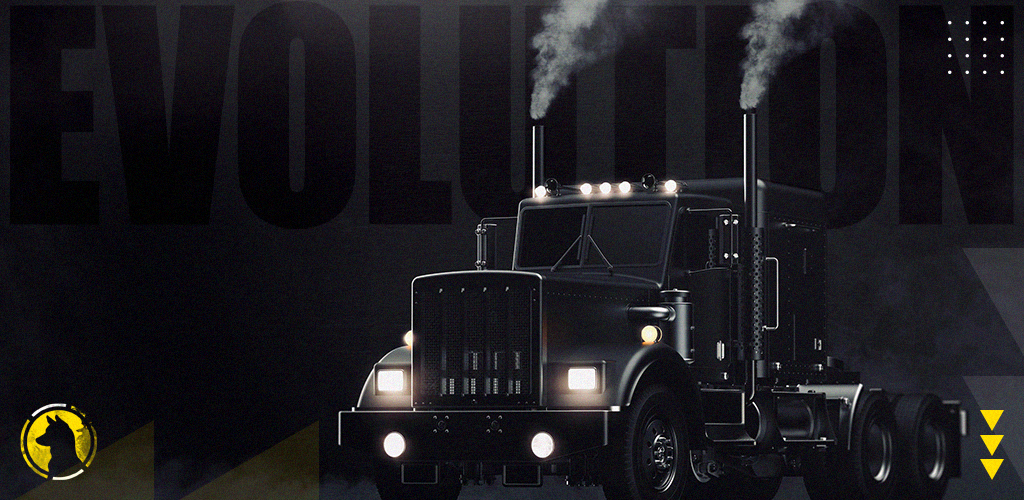The Evolution of Digital Marketing in the Transportation Industry.
by Alice / October 29, 2024
The transportation industry has undergone a significant transformation in digital marketing, evolving alongside technology, consumer behavior, and competitive pressures.
Today, companies in this sector are leveraging advanced strategies to stay ahead of the curve. Let’s explore the journey of digital marketing in transportation, from its early stages to the sophisticated, data-driven, and omnichannel landscape we see today.
1. The Early Stages: Building an Online Presence (2000s – Early 2010s)
In the early 2000s, transportation and logistics companies began to realize the importance of an online presence. At this stage, the primary focus was on creating basic websites to provide essential information about services.
Search engine optimization (SEO) was relatively simple, involving keyword stuffing and basic metadata to boost visibility in search engine results. Email marketing emerged as a direct line of communication, used to send updates, promotional offers, and transactional details to clients.
These early efforts laid the foundation for more advanced digital marketing strategies that would come in the next decade.
2. The Social Media Boom: Building Engagement (Mid-2010s)
As social media platforms like Facebook, Twitter, and LinkedIn grew in popularity, transportation companies saw an opportunity to engage directly with their clients and build brand awareness. Social media was no longer just for casual communication; it became an important tool for customer service and real-time interaction.
Content marketing also began to take shape during this period. Companies produced blogs, infographics, and videos to showcase their expertise and share industry news, allowing them to connect with customers and establish authority in their field.
Additionally, the rise of online review platforms such as Yelp, Google My Business, and Facebook Reviews put a spotlight on customer feedback, making reputation management a crucial part of digital strategy.
These developments marked the industry’s shift towards a more interactive and responsive marketing approach.
3. Data-Driven Marketing: The Rise of Personalization (Late 2010s)
In the late 2010s, digital marketing in the transportation industry became increasingly data-driven. Advanced SEO strategies and pay-per-click (PPC) advertising through platforms like Google Ads allowed companies to target specific keywords related to their services more effectively.
The use of Customer Relationship Management (CRM) systems allowed for a more personalized approach to marketing. Email campaigns were tailored to individual customer preferences, fostering stronger relationships and enhancing customer loyalty.
Marketing automation tools such as HubSpot and Marketo also became prevalent, enabling companies to track user behavior and automate communication, making it possible to optimize campaigns based on real-time data insights.
4. Mobile Optimization and Location-Based Marketing (Late 2010s – Early 2020s)
As mobile usage surged, transportation companies recognized the need to optimize their websites for mobile devices and invest in mobile apps to enhance customer experiences. Location-based marketing techniques like geofencing allowed companies to target customers in specific regions, creating opportunities for real-time engagement.
Social media advertising also became more sophisticated, with platforms such as Facebook, LinkedIn, and Instagram offering precise targeting options. Companies used these tools to promote services, generate leads, and build brand loyalty through personalized ads and engagement strategies. These developments made it clear that digital marketing in transportation was no longer just about visibility; it was about reaching the right audience, in the right place, at the right time.
5. The Power of Video Content and Influencer Marketing (2020s)
As we entered the 2020s, video content became an essential component of digital marketing strategies for transportation companies. Videos were used for various purposes, such as showcasing virtual tours of facilities, sharing driver testimonials, presenting case studies, and providing live operational updates. This shift towards visual content helped companies build trust and transparency with their audience.
Webinars and virtual events also became popular tools, enabling companies to educate and engage with broader audiences on logistics and transportation topics. In addition, collaborations with industry experts and influencers, particularly on LinkedIn and YouTube, allowed companies to expand their reach and build credibility in the market.
Influencer marketing became a valuable tool for connecting with targeted audiences, further establishing brands as trusted leaders in their field.
6. Embracing AI, Automation, and Analytics (2020s – Present)
Today, AI, automation, and advanced analytics are at the forefront of digital marketing strategies in transportation. AI tools are being utilized for predictive analytics, helping companies anticipate customer needs and behaviors. This has also facilitated customer segmentation and enabled the use of chatbots for automated customer service, providing quick and efficient responses.
Hyper-personalization has become a key focus, with data from customer interactions being used to create tailored marketing experiences. Dynamic email content, personalized ads, and customized landing pages are all examples of how companies are making the most of the information they collect to engage customers effectively.
Omnichannel marketing strategies have also become integral. Companies are integrating social media, email, websites, and mobile apps into cohesive campaigns, ensuring a seamless customer journey across all platforms. This approach not only improves customer experiences but also strengthens brand loyalty.
The Future of Digital Marketing in Transportation
The evolution of digital marketing in transportation reflects a shift from basic online presence strategies to sophisticated, data-driven approaches that prioritize personalization, engagement, and sustainability. As technology continues to advance, the industry will likely adopt even more innovative solutions, such as AI-driven insights and real-time customer interaction through emerging digital platforms.
Transportation companies that embrace these changes will be well-positioned to meet evolving customer expectations, stay ahead of the competition, and drive growth in a rapidly changing market. The journey of digital marketing in this sector is far from over, and those who stay adaptive will continue to thrive in the years to come.
Conclusion
Digital marketing in the transportation industry has come a long way, from simple SEO and basic websites to AI-driven strategies and green marketing. As we look to the future, one thing is clear: the ability to innovate and adapt is key for success in this dynamic and competitive field.
Never miss an article! Join our mailing list.
Services
© 2024 YellowHound Creative

